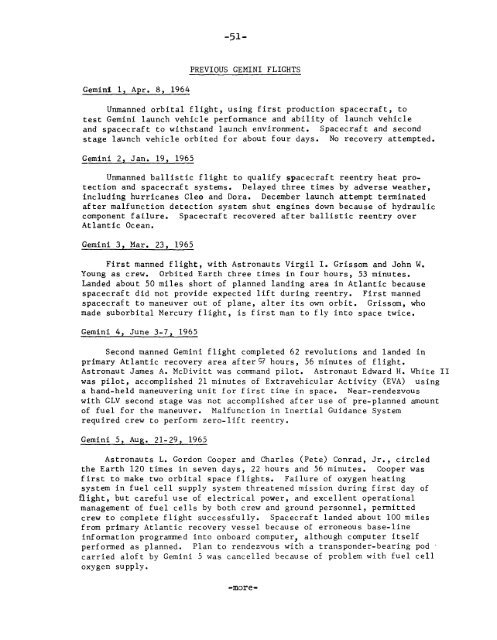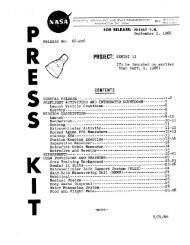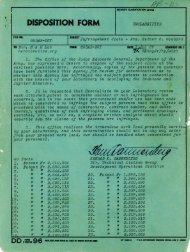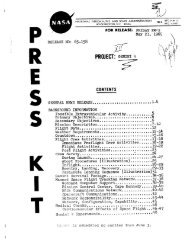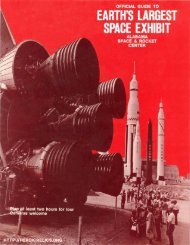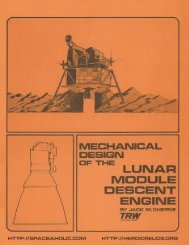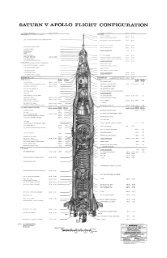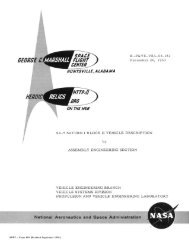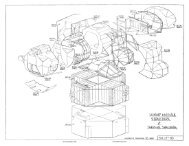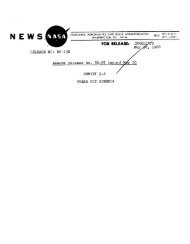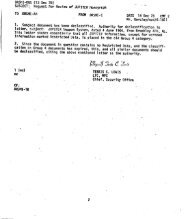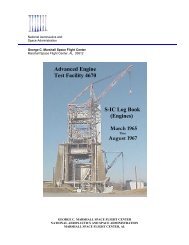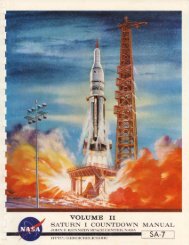Gemini 10 Press Kit - heroicrelics Mirror
Gemini 10 Press Kit - heroicrelics Mirror
Gemini 10 Press Kit - heroicrelics Mirror
Create successful ePaper yourself
Turn your PDF publications into a flip-book with our unique Google optimized e-Paper software.
-51-<strong>Gemini</strong> 1, A ~K. 8, 1964PREVIOUS GEMINI FLIGHTSUnmanned orbital flight, using first production spacecraft, totest <strong>Gemini</strong> launch vehicle performance and ability of launch vehicleand spacecraft to withstand launch environment. Spacecraft and secondstage launch vehicle orbited for about four days. No recovery attempted.<strong>Gemini</strong> 2, Jan. 19, 1965Unmanned ballistic flight to qualify spacecraft reentry heat protectionand spacecraft systems. Delayed three times by adverse weather,including hurricanes Cleo and Dora. December launch attempt terminatedafter malfunction detection system shut engines down because of hydrauliccomponent failure. Spacecraft recovered after ballistic reentry overAtlantic Ocean.<strong>Gemini</strong> 3, Mar. 23, 1965First manned flight, with Astronauts Virgil I. Grissom and John W.Young as crew. Orbited Earth three times in four hours, 53 minutes.Landed about 50 miles short of planned landing area in Atlantic becausespacecraft did not provide expected lift during reentry. First mannedspacecraft to maneuver out of plane, alter its own orbit. Grissom, whomade suborbital Mercury flight, is first man to fly into space twice.<strong>Gemini</strong> 4, June 3-7, 1965Second manned <strong>Gemini</strong> flight completed 62 revolutions and landed inprimary Atlantic recovery area after9 hours, 56 minutes of flight.Astronaut James A. McDivitt was command pilot. Astronaut Edward H. White I1was pilot, accomplished 21 minutes of Extravehicular Activity (EVA) usinga hand-held maneuvering unit for first time in space. Near-rendezvouswith GLV second stage was not accomplished after use of pre-planned amountof fuel for the maneuver. Malfunction in Inertial Guidance Systemrequired crew to perform zero-lif t reentry.<strong>Gemini</strong> 5, Aug. 21-29, 1965Astronauts L. Gordon Cooper and Charles (Pete) Conrad, Jr., circledthe Earth 120 times in seven days, 22 hours and 56 minutes. Cooper wasfirst to make two orbital space flights. Failure of oxygen heatingsystem in fuel cell supply system threatened mission during first day offlight, but careful use of electrical power, and excellent operationalmanagement of fuel cells by both crew and ground personnel, permittedcrew to complete flight successfully. Spacecraft landed about <strong>10</strong>0 milesfrom primary Atlantic recovery vessel because of erroneous base-lineinformation programmed into onboard computer, although computer itselfperformed as planned. Plan to rendezvous with a transponder-bearing pod 'carried aloft by <strong>Gemini</strong> 5 was cancelled because of problem with fuel celloxygen supply.-more-


